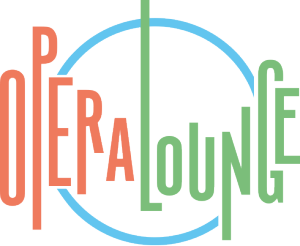Zumindest die Namen sind klingend, bis heute: Nellie Melba, die sängerisch das British Empire regierte, Mary Garden, die erste Mélisande, die „Sarah Bernhardt der Oper“, Emma Calvé, die legendäre Carmen. Oder auch Selma Kurz, deren Triller nicht nur die Wiener Hofoper berückte, Frances Alda, die oftmalige Caruso-Partnerin der MET, Sibyl Sanderson, die Schönheit, der Massenet verfallen war, was sich in einer Reihe von „Sanderson-Opern“ von ihm niederschlug. Und alle – von Nellie Melba bis Selma Kurz – waren sie Schülerinnen von Mathilde Marchesi, geborene Graumann, in Paris ausgebildet bei Manuel García dem Jüngeren, legendäre Figur der Gesangshistorie auch er, (und ihre Tochter Blanche Marchesi, die erst 1940 starb und viele große Sängerinnen unterrichtete, G. H.). Mathilde Marchesi und ihre Gesangsschule steht für das, was an „Belcanto“ ins beginnende 20.Jahrhundert zu retten war. Trotzdem wird es zumindest so faszinierend sein, neben dem ihre Schülerinnen Verbindenden auch dem Trennenden nachzuspüren: dem Individuellen, soweit es in Tonaufnahmen von ehedem konserviert ist (so die Kollegin Tina Tengel als Einleitung ihrer dokumentarischen Sendung „Stimmen hören“ im ORF am 28. November 2013).
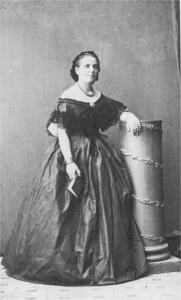
„The Marchesi School“: Mathilde Castrone-Marchesi/OBA
Eine absolut faszinierende CD bei Symposium in der Reihe der Harold-Wayne-Collection beschäftigt sich mit den akustischen Hinterlassenschaften dieser Sängerinnen, die durch die formbildende, formbewahrende Schule der Mathilde Marchesi und ihrer nicht minder wichtigen Tochter Blanche Marchesi gegangen waren. Zu den wirklich raren Tondokumenten gesellt sich ein hochinformativer Artikel des bedeutend englischen Stimmbildners (dazu Autors zahloser Artikel über Oper, Opern und Aufführungen) John Freestone (1910 – 2006), selber einer der letzten Schüler von Blanche Marchesi und Lehrer des Tenors Laurence Dale, der zum einen die Belcanto-Methode der Marchesis aufbrezelt und zum anderen die Schülerinnen und Nachkommen dieser bedeutenden, authentischen Gesangsschule vorstellt, die ihre Auswirkungen bis heute hat und die selbst in unseren Tagen Sängerinnen wie Elisabeth Schwarzkopf (über Lula Mysz-Gmeiner, die eine Schülerin von Blanche Marchesi war), Joan Sutherland, Maria Callas (durch Elvira de Hidalgo) oder Marilyn Horne (und in letzten Ausläufern auch Cecilia Bartoli in ihrer Beschäftigung mit Maria Malibran) zur „richtigen“ Gesangstechnik und zur perfekten Beherrschung des Belcanto geholfen hat. Im Folgenden also der Artikel von John Freestone (wieder mal im originalen Englisch).
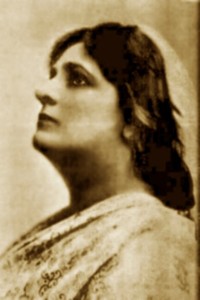
„The Marchesi School“: Blanche Marchesi als Santuzza/OBA
The Marchesi School – Mathilde Marchesi, the most celebrated singing-teacher of her time, was born on the 24th March 1821 in Frankfurt am Main, her maiden name being Graumann. Her father, a prosperous merchant, lost his fortune, and Mathilde, who had been brought up to understand that she would never have to earn her living, was sent, despite her desire to study singing, to be a governess to a wealthy Austrian family. She was very unhappy in her work and managed to have singing lessons from the composer Nicolai. Her aunt, Baroness Dorothea von Erdtmann, dedicatee of Beethoven’s Piano Sonata Opus 101, took her to Pauline Viardot who said that she must study with her brother. Eventually, in 1845, her father grudgingly consented to her going to Paris where she did indeed study with Manuel Garcia and had the advantage of hearing legendary singers like Persiani, Grisi, Alboni, Duprez, Tamburini and Lablache. She also took lessons in declamation from Samson, the teacher of Rachel. Garcia was so impressed with her abilities that when, as a result of a broken arm, he was forced to give up teaching for a time, he entrusted all his pupils to her. She had an excellent mezzo-soprano voice and for some years sang very successfully as a concert singer but, in deference to her father’s wishes, not in opera. She made a number of successful concert tours, including one to England.
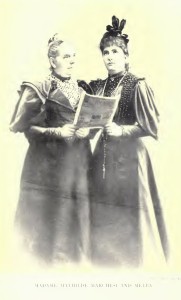
„The Marchesi School“: Mathilde Marchesi und Nelli Melba/OBA
In 1852 she married Salvatore, Cavaliere di Castrone, Marchese della Raiata, who sang and taught under the name of Marchesi to avoid offending the susceptibilities of his family, and from 1854 Mathilde taught singing in Vienna. Many people nowadays are inclined to think that she only produced coloratura sopranos, but certainly in Vienna she trained many other great artists, including the dramatic soprano Gabrielle Krauss, who was for years the undisputed queen of the Paris Opera; the mezzo-soprano Antonietta Fricci; Lima de Murska; and the celebrated contralto Caroline Dory, who was especially famous for her Arsace in Rossini’s Semiramide. She only taught female singers for the very simple reason that her husband, also a Garcia pupil, instructed the male pupiIs.
After a while she felt that she should move in a wider circle, so in 1861 she moved to Paris, where she rapidly became the most famous singing teacher of her generation. Pupils flocked to her studio. She insisted that all her pupils practice exercises which involved agility because she maintained that this was essential for the preservation of the voice, and this may have helped to create the impression that she tried to make all her pupils specialise in coloratura roles.
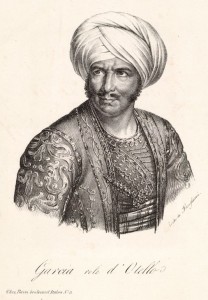
„The Marchesi School“: Lehrer und tenor Manuel García (als Otello von Rossini)/OBA
Of course she was not the right teacher for every artist. One famous singer who was not happy with Marchesi was Mary Garden. In her biography she says that she had lessons for three weeks and then, after a short holiday, she wrote to Mathilde saying that she did not wish to continue her lessons. Madame’s reply was brief and to the point: „Mary Garden, a rolling stone gathers no moss. Don’t cry till you come out of the woods. Mathilde Marchesi“. Amy Castles was another who moved on. Nevertheless, the vast majority of Marchesi’s pupils were happy with their tuition and many had highly successful careers..

„The Marchesi School“: Mathilde Marchesi, 1896/OBA
The Marchesis had four daughters, Theresa, Stella, Clare, who died in infancy, and, lastly, Blanche. The last named was the only one who wished to become a singer. She studied with her mother and was perhaps the only student taught entirely by her. She acquired a formidable technique, but unfortunately her natural voice was not of particular promise and it was only her great musical intelligence and her wonderful gift for interpretation which made her an artist of distinction. She sang with the Moody-Manners Opera Company for a while but was never heard at Covent Garden in the international seasons. Blanche herself put this down to the machinations of Melba, but the truth was that her voice was of insufficient volume and range for an operatic career. She was highly successful as a concert artist, and the recordings of her which are included on this Compact Disc show that even after her seventieth birthday, when she made her last recordings, she was still able to show her mastery of style in a unique manner.
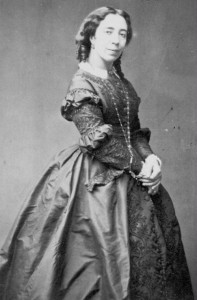
„The Marchesi School“: García Tochter und Lehrerin/Schülerin Pauline Viardot/OBA
Blanche settled in London at number 78, Lancaster Gate and taught singing from her home for many years. I became her pupil in 1938 and stayed with her until 1940 when I was called up into the Royal Artillery. I recall my lessons vividly. After an audition she said that I had been badly taught but she felt that she could correct this, and proceeded to give me exercises for the first year of my tuition. She insisted that men’s‘ voices only used one register, but that the top notes from E natural upwards should be covered, and never sung with an open sound.
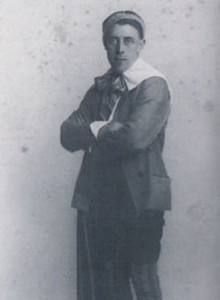
„Ther Marchesi School“: John Freestone in „The Gondoliers“, 1936/OBA
Once she was satisfied that my technique was sufficiently sound she spent most of my lessons dealing with questions of interpretation. Her voice by this time was virtually non-existent but I remember her singing Schubert’s Erlkönig in a husky voice with so much dramatic conviction that I have never forgotten it. She explained that
one needed four distinct voices for the song. The narrator should always sound uninvolved, the father should start off sounding warm and comforting, but should gradually become more agitated, the boy should sound progressively more terrified, but the Erlking should remain an icy whisper throughout, and should never become a creature of flesh and blood.
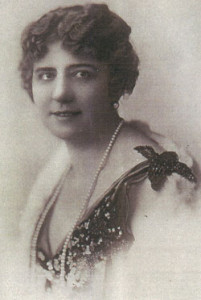
„The Marchesi School“: Miriam Licette/OBA
Certainly Blanche’s teaching gave the lie to the suggestion that the Marchesi school was interested only in vocal technique. Nothing could be further from the truth, and, as I have said, Blanche’s own recordings make this point very clearly.
Both Mathilde and Blanche Marchesi taught that the female voice consists of three registers – the chest, the medium and the head. Beginners were always given exercises to place the chest voice correctly first, using an open „Ah“ sound up to and including the lower E in the treble clef. The medium register was developed next, using the French U sound up to the high F. The head register, which was introduced last, on the „Ah“ sound, starting always from F at the top of the treble clef. These were practiced until the registers were equal in quality, and then scales and arpeggios were given to ensure the matching of the tones.
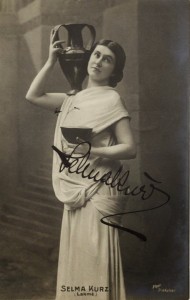
„The Marchesi School“: Selma Kurz (als Lakmé)/OBA
Of course this method of practise was only used for complete beginners. Once the registers were firmly established further exercises were given to ensure they were blended smoothly. The final result was to produce a voice which was even throughout its entire range, and which sounded as though there were no separate registers. Listening to the records of Arnoldson, Calvé, Eames, Kurz and Melba one is very seldom conscious of a change of gear, unless the singer for dramatic reasons wishes to make the change apparent. For example, Blanche deliberately emphasises a very telling chest register in parts of her recording of the „Sicilian cart driver’s song“, and the result is quite magical.
Mathilde Marchesi was often criticised by other teachers and singers who said that her method was only suitable for light sopranos. Many Italians felt that the typical Marchesi pupils sang with great purity of tone, but were too sexless and lacking in warmth. Indeed this type of voice was appreciated more in Anglo-Saxon than in Latin countries.

„The Marchesi School“: Emma Eames/OBA
Blanche Marchesi continued to teach like her mother, but she also had male pupils. She claimed that all men sang in one register, covering the higher notes. To begin with pupils had to sing on the open vowel „Ah“ but the covered quality was obtained by singing the higher notes on the French „U“ sound or the English „E“ in the initial stages of instruction. Breathing was taught on the „Lateral costal“ principle, filling and expanding the lower part of the lungs and slightly pulling in the abdomen to give the necessary support.
While the Marchesi school was the most favoured one of its day, there were other highly successful teachers. For example, Lamperti senior, whose pupils include Albani and Sembrich, and Giovanni Sbriglia who taught Jean and Edouard de Reszke, Nordica, Sybil Sanderson (who also had lessons from Mathilde Marchesi) and Plangon.
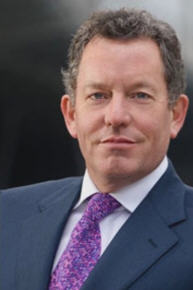
„The Marchesi School“: Laurence Dale war Schüler von John Freestone/OBA
It was, however, the extraordinary success of Marchesi, whose pupils included Sigrid Arnoldson, Emma Calvé, Emma Eames, Etelka Gerster and Melba, which made her pre-eminent in her time. Fortunately there are records of a number of the later generation of her pupils, and these remain as a wonderful testimony to a very great teacher. (SYMPOSIUM 1188 The Harold Wayne Collection: The Marchesi School) John W. Freestone
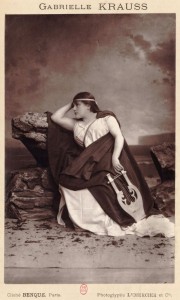
„The Marchesi School“: die berühmte dramatische Sängerin Gabrielle Krauss als Gounods Sapho in einer Fotographie von Benque/Gallica
Zu den vielen Schülerinnen der beiden Marchesis gibt es von Freestone amüsante Anmerkungen, die er von Blanche Marchesi kolportiert. Die lange Liste der heute noch bekannten und vieler vergessener Sängerinnen findet sich am Ende des Artikels im Booklet der Symposium-Ausgabe, so: Frances Alda (1872 Cambridge, Massachusetts – 1953 London), Sigrid Arnoldson (1861 Stockholm – 1943 Stockholm), Blanche Arral (1864 Lidge – 1945 New York), Emma Calvé (Décazeville – 1942 Millau), Ada Crossley, Emma Eames (August 13, 1865 – June 13, 1952), Selma Kurz (1874 Bielietz, Schlesien – 1933 Wien), Elizabeth Parkina, Ellen Beach Yaw (1869 Boston – 1947 Covina, California), Yvonne de Tréville (1881 Galveston, Texas – 1954 New York), natürlich Blanche Marchesi, Suzanne Adams (28 November 1872 – 5 February 1953), Nina de Friede (1859 – 1942) und prime of place Nelly Melba (geb. Armstrong; 1861 Burnley, nahe Melbourne – 1931 Sydney) sowie Etelka Gerster (25 June 1855, Košice – 20 August 1920, Pontecchio), Julia Culp (6 October 1880 – 13 October 1970), Sigrid Onegin (June 1, 1889 – June 16, 1943), Sybil Sanderson (December 7, 1864 – May 16, 1903), Jeanne Horovitz, Miriam Licette (9 September 1885 – 11 August 1969), Esther Pallisser, Nadine Boulichoff, Ida Bayer, Amalia Stagl, Elisa Wiedemann, Carolina Smeroschi, Anna d´Angeri, Antoinette Sterling, die berühmte Gabrielle Krauss, Ilma de Murska (i. e.Ema Pukšec/ February 6, 1834 – January 14, 1889) und viele mehr. Beide Marchesi-Damen waren tüchtig…
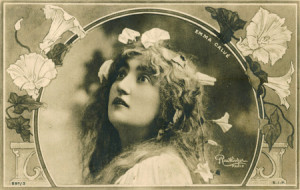
„The Marchesi School“: Emma Calvé/OBA
Auch von Pearl gibt es eine “Marchesi”-CD (Pearl 0067), und dazu liest man: An exceptionally interesting disc (Pearl 0067) is testimony to the remarkable legacy of the great voice teacher of the late 19th century, Mathilde Marchesi(1863-1940). Her pupils were mostly lyric sopranos, and all of them displayed the hallmarks of her teaching: evenness of tone production throughout the chest, middle, and head registers, precision of attack and intonation, and perfect trills in which both notes are given equal value (for a good example, listen to Ellen Beach Yaw singing Masse’s „Nightingale Song“). Some of her students became famous (Alda, Calvé, Eames, Kurz, Melba), others were less well known (including Mathilde’s daughter Blanche and one tenor, John Freestone). The 21 selections on the disc were well chosen to display the vocal characteristics of each of the 16 singers represented, though the acoustic horn was more congenial to some than to others. Melba’s studio recordings usually make her sound soulless, but the warmth and excitement that were reported of her performances are apparent in Mimi’s „Addio“ (from La Bohème), recorded live at her 1926 farewell concert at Covent Garden. Alda’s vibrancy and color (in Giordano’s „Sempre cosi“) and Kurz’s spectacular agility and precise placement (in Auber’s „Air and Variations“) come through with remarkable vividness. The transfers are generally good, though there are lapses of intonation on some tracks that probably come from the recording process rather than the singers. This release is important and valuable for historical performance enthusiasts and for all lovers of vocal artistry. Dazu auch ein interessanter Eintrag auf dem blog Voice talk über Garcia und Marchesi

John Freestone 1938/OBA
Zum Autor: John Freestone (1910 – 2006) was a student of Mme Marchesi. „She was old and physically weak but her character held an almost superhuman strength….Blanche asked me to sing a scale and an arpeggio and finally an aria. She then said “ You have a voice of good quality, but your method is all wrong and the voice would soon have been ruined, but I will restore it“. A few months later she died and Freestone had to join the army. Listen to him in Grieg’s I love thee and Geehl’s for you alone record around that time. Freestone became involved in education and writing on music. He also taught voice. (Freestone/Blanche Marchesi zu hören auf youtube)
http://www.classical.net/music/recs/reviews/r/rom82017a.php
 Das britische Label Symposium hat neben zahlreichen anderen historischen Veröffentlichungen dankenswerterweise auch die wichtigsten akustischen Schätze aus der legendären Sammlung Harold Wayne allgemein zugänglich gemacht. Diese editorische Großtat in insgesamt 40 Folgen war umso wichtiger, als Waynes unvergleichliche Sammlung nach seinem Tod zwar noch geschlossen verkauft wurde, nach dem Ableben des neuen Besitzers Paul Getty aber durch Auktionen in alle Winde verstreut wurde.
Das britische Label Symposium hat neben zahlreichen anderen historischen Veröffentlichungen dankenswerterweise auch die wichtigsten akustischen Schätze aus der legendären Sammlung Harold Wayne allgemein zugänglich gemacht. Diese editorische Großtat in insgesamt 40 Folgen war umso wichtiger, als Waynes unvergleichliche Sammlung nach seinem Tod zwar noch geschlossen verkauft wurde, nach dem Ableben des neuen Besitzers Paul Getty aber durch Auktionen in alle Winde verstreut wurde.
Die Folge 25 (Symposium 1188) widmet sich der sogenannten Marchesi-Schule, entwickelt von der gebürtigen Deutschen Mathilde Marchesi. Sie selbst war Schülerin des legendären Manuel Garcia II gewesen, Bruder der Malibran und Pauline Viardots. Typisch für diese, bis in das frühe 20. Jahrhundert sehr gebräuchliche Gesangstechnik ist der fast ausschließliche Gebrauch der Kopfstimme, der allerdings bis zur höchsten Virtuosität entwickelt wurde. Nicht zuletzt durch das Erscheinen eines neuen, große Stimmen erfordernden Repertoires auf der Opernbühne trat diese Technik mehr und mehr in den Hintergrund. In ihrer Blütezeit bedienten sich aber praktisch alle bedeutenden Sopranistinnen dieser Technik.
Die Liste der berühmten Schülerinnen Marchesis liest sich wie ein who’s who der Operngeschichte des späten 19. Und frühen 20. Jahrhunderts. Eine ihrer erfolgreichsten Schülerinnen war die eigene Tochter, Blanche Marchesi, von der auf der vorliegenden CD so gut wie sämtliche überlieferten Aufnahmen enthalten sind. Die berühmtesten Schülerinnen waren zweifellos Nellie Melba, Selma Kurz, Emma Calve , Sigrid Arnoldson und Emma Eames. Sie sind hier ebenso vertreten, wie Suzanne Adams, Frances Alda, Blanche Arral, Ada Crossley, Nina de Friede, Elizabeth Parkina, Yvonne de Treville und Ellen Beach-Yaw. Jeder dieser Titel ist eine Zeitreise, die nicht nur mit heute ungewohnter Gesangstechnik vertraut macht, sondern darüber hinaus auch teilweise vergessenes Repertoire zu Gehör bringt. Ein lohnender Ausflug!
Peter Sommeregger
und Foto oben: Nellie Melba gegen Luisa Tettrazini: Karikatur zum Streit der Gesangsschulen (Tetrazzini versus Melba for For the Gramophone & Typewriter Company 1904)
